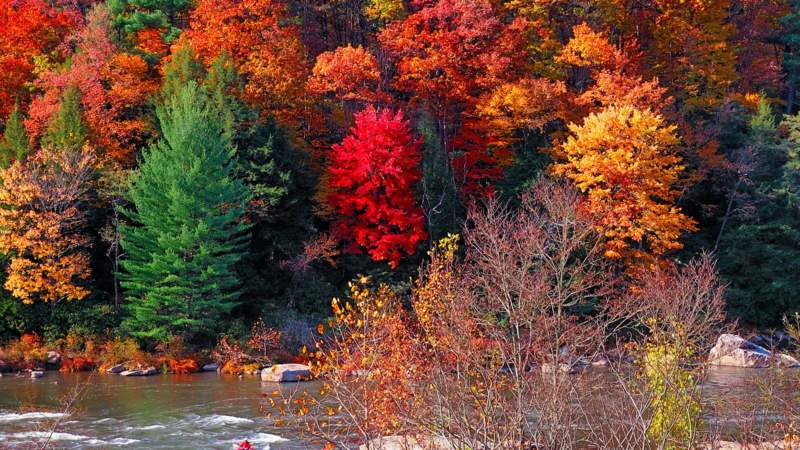National Natural Landmark
Botanically-diverse Ferncliff Peninsula is a 100-acre National Natural Landmark in the heart of Ohiopyle State Park. Its microclimate — formed by a tight turn of the fast-moving Youghiogheny River — hosts colorful wildflowers and ancient ferns found only in warmer southern regions, including six imperiled or endangered species. Meandering footpaths featuring fossil-imprinted rocks, 200-year-old hemlocks, and cliffside lookouts onto the ever-present whitewater offer hikers a way to explore the whole peninsula, which is accessible via the Great Allegheny Passage between the Ohiopyle Low and High Bridges.
History
Ohiopyle became a favorite destination of people living in Pittsburgh in the 1880’s as people sought fresh air and open spaces away from industrialized cities. One of the original five hotels in the areas, the Ferncliff Hotel, was on the peninsula, and eventually grew to include not only a boardwalk but also a bowling alley, tennis courts, ball fields, and fountains that hosted tourists for decades. After World War II, tourism declined and the hotels were razed. Ohiopyle resident Lillian McCahan launched an intense lobbying effort to protect Ferncliff Peninsula from subsequent commercial development. She convinced the Western Pennsylvania Conservancy and Fallingwater owner Edgar Kaufmann to purchase the peninsula in 1951, and paved the way for the Commonwealth of Pennsylvania to establish Ohiopyle State Park twenty years later.
Visitor Information
Ferncliff Peninsula is part of Ohiopyle State Park and is open dawn to dusk 365 days a year. Parking along the GAP is available at the former train station in town, and there is also a dedicated lot that serves Ferncliff Peninsula and the Laurel Highlands Hiking Trail off PA-381, north of the Youghiogheny River just on the edge of the tiny borough.

